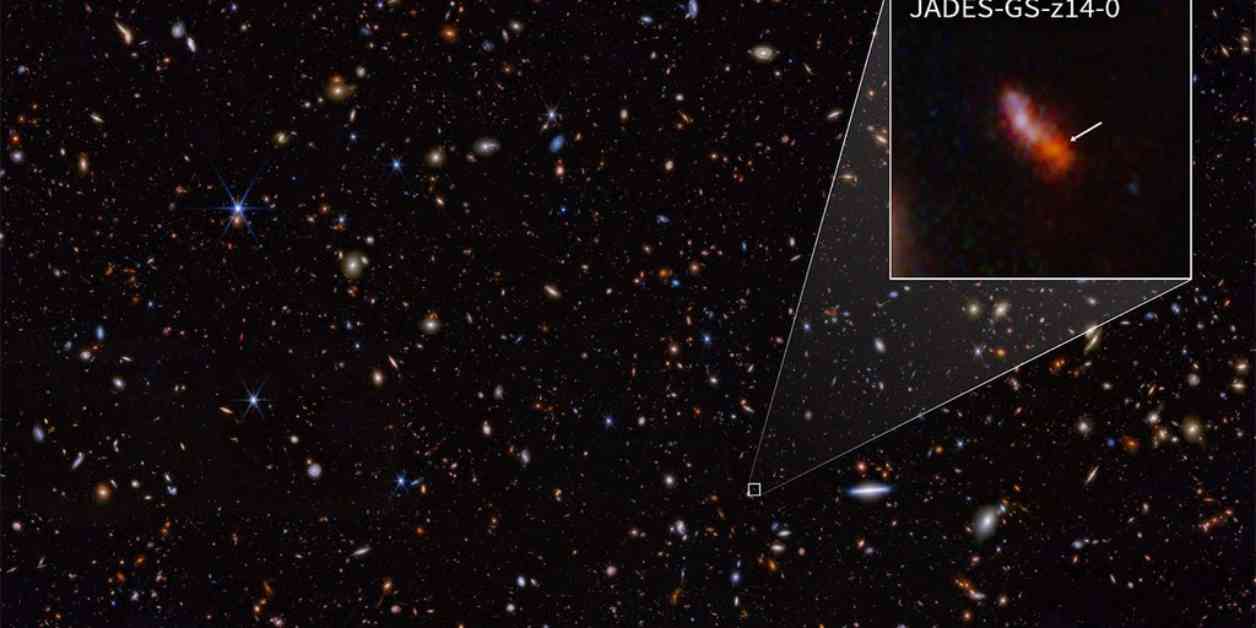The James Webb Space Telescope (JWST) has recently captured what scientists believe to be the most distant known galaxy, marking a significant milestone in the field of astronomy. This groundbreaking discovery comes after two years of observing a period referred to as a “Cosmic Dawn” by astronomers, which occurred in the first few hundred million years after the big bang. During this time, the first galaxies were born, giving scientists valuable insights into the early stages of the universe.
The team of international astronomers utilized the advanced capabilities of the Webb telescope to observe galaxies as part of the JWST Advanced Deep Extragalactic Survey (JAMES) program. By using the Near-Infrared Spectrograph (NIRSpec), the scientists were able to obtain a spectrum of the distant galaxy JADES-GS-z14-0, allowing them to accurately measure its redshift and determine its age. This particular galaxy dates back to less than 300 million years after the big bang, making it a remarkable find in the realm of astrophysics.
Through the analysis of the galaxy’s spectrum, the astronomers were able to confirm that it had a record-breaking redshift of 14.32, surpassing the previous most-distant galaxy record. This discovery has sparked excitement among the scientific community due to the mystery surrounding the source and the galaxy’s extraordinary luminosity from such a great distance. The galaxy, estimated to be over 1,600 light years across, is believed to be primarily composed of light emitted from young stars rather than a supermassive black hole.
Further examination of the galaxy revealed that its color was reddened by dust, indicating that it may not have been as blue as expected during its early stages of formation. Wavelengths of light collected by Webb’s Mid-Infrared Instrument (MIRI) suggested the presence of ionized gas emission from hydrogen and oxygen, hinting at the existence of multiple generations of massive stars in the galaxy’s history.
The astronomers involved in the study expressed their surprise at the unique characteristics of the galaxy, noting that it does not align with existing theoretical models and simulations of early-universe galaxies. They anticipate that the Webb Telescope will continue to uncover more luminous galaxies from even earlier cosmic times in the coming years, providing valuable insights into the diverse array of galaxies that existed during Cosmic Dawn.
While the findings are still undergoing further analysis and review, this discovery represents a significant advancement in our understanding of the universe’s early evolution. The Webb Telescope, a joint project between NASA and the European Space Agency, continues to push the boundaries of space exploration and scientific discovery, following in the footsteps of its predecessor, the Hubble Telescope. As astronomers delve deeper into the mysteries of the cosmos, we can expect to witness more groundbreaking revelations that challenge our current knowledge of the universe.




